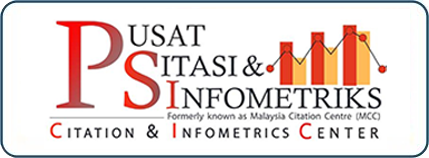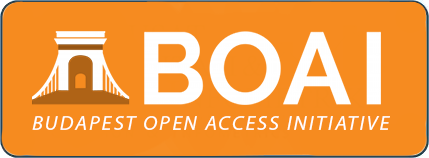Analysing Trends In Zakat Collection And Distribution Across Advanced And Less Advanced States In Malaysia
DOI:
https://doi.org/10.64757/alqanatir.2025.3404/1206Keywords:
Islamic Finance, Malaysia, Poverty, Zakat Collection,, Zakat DistributionAbstract
Zakat, a fundamental pillar of Islamic finance, plays a crucial role in addressing income inequality and poverty alleviation. Each state in Malaysia manages its zakat institutions. Some of the states are categorized as advanced states, while other groups of states are less advanced. Certain states have significantly higher collection amounts than others. Drawing on the Resource-Based View (RBV), this paper emphasizes how internal resources and capabilities within zakat institutions can influence performance outcomes in both zakat collection and distribution. This paper provides a review of the scientific method to assess the performance of zakat collections and distributions, highlighting both its successes and challenges. The study found that the zakat collection amount generally increased year after year. However, not all states in the study showed an increased trend in the zakat distribution amount. The study also revealed that there was no difference in the zakat distribution between advanced and less advanced states. However, there is still room for improvement in terms of transparency, collaboration with other agencies, and the inclusion of additional items in the distribution process to better serve the needs of the target population.
Downloads
References
Journal
Ahmad, I. H., & Ma'in, M. (2014). The Efficiency of Zakat Collection and Distribution: Evidence from Two Stage Analysis. Journal of Economic Cooperation & Development, 35(3).
Azhar, Z., Mydin, M. K. K., & Pitchay, A. A. (2023). Zakat Distribution Priorities in Malaysia: An Analytic Hierarchy Process Analysis. Asian Journal of Business and Accounting, 69-87.
Habibullah, M. S., Din, B. H., Sanusi, N. A., & Hamid, B. A. (2018). The less states are converging to the richer state in Malaysia: An empirical investigation with some robust results. International Journal of Economics and Management, 12, 549-566.
Hussin, Mohd Yahya, Fidlizan Muhammad, & Mohamad Ali Roshidi Ahmad. (2013). Kepatuhan Membayar Zakat: Analisis Kutipan dan Ketirisan Zakat Fitrah di Selangor. Jurnal Syariah 21(2): 191–206.
Ismail, A. G., & Hussain, M. N. (2017). The economic impact of zakat distribution on the financial well-being of low-income households in Malaysia. International Journal of Zakat, 3(3), 42-58.
Mahmood, M., Hassan, R., & Hassan, M. H. (2021). Enhancing zakat distribution in Malaysia: Strategic suggestions. Journal of Islamic Accounting and Business Research, 12(4), 519-534.
Nazeri, M. A., Hashim, H., & Abdullah, A. (2023). Blockchain technology in zakat: Enhancing transparency and trust. Journal of Islamic Finance, 10(1), 104-119.
Razimi, M. S. A., Romle, A. R., & Erdris, A. M. (2016). Challenges in the management and distribution of zakat for poverty alleviation: A comparative study of Malaysian zakat institutions. Asian Journal of Islamic Management, 2(1), 21-34.
Razimi, M. S. A., Romle, A. R., & Erdris, A. M. (2016). Zakat management in Malaysia: a review. American-Eurasian Journal of Scientific Research, 11 (6). 453-457.
Wahid, H., Ahmad, S., & Kader, R. A. (2009). Distribution of zakat and its effects on recipients: A case study of Malaysia. Journal of Islamic Economics, Banking and Finance, 5(1), 43-61.
Yahaya, S. N., & Halim, H. A. (2022). Zakat as an Instrument for Reducing Income Inequality: Evidence from Malaysian Case Studies. Journal of Islamic Economics, 45(2), 155-171.
Yusof Punding, S., Sheikh Mohammad, R., & Abu Bakar, N. (2024). Zakat Distribution and Poverty Alleviation in Malaysia: A Systematic Review of Key Success Factors and Challenges. Journal of Islamic Finance and Social Development, 12(1), 87-106.
Website
Lembaga Zakat Selangor. (n.d.). https://www.zakatselangor.com.my/dataterbukalzs
Pungutan | BZF. (n.d.). https://appszakat.sabah.gov.my/statistik_pungutan.php
SPMJ JAWHAR. (n.d.). https://baitulmal.jawhar.gov.my/index.php
Suhaila Shahrul Annuar. (2019, January 28). Jumlah kutipan zakat PPZ-MAIWP 2018 RM651.22 juta. Berita Harian. https://www.bharian.com.my/berita/nasional/2019/01/525030/jumlah-kutipan-zakat-ppz-maiwp-2018-rm65122-juta
Downloads
Published
How to Cite
Issue
Section
License
Copyright (c) 2025 Adnan Zainal Abidin, Nurhidayah Yahya, Suria Majdi

This work is licensed under a Creative Commons Attribution 4.0 International License.









